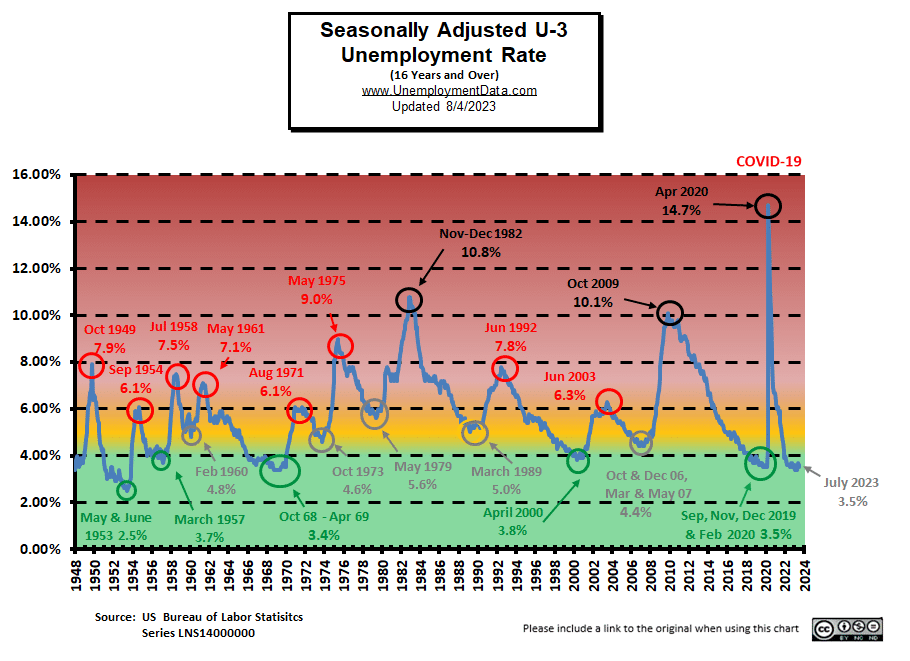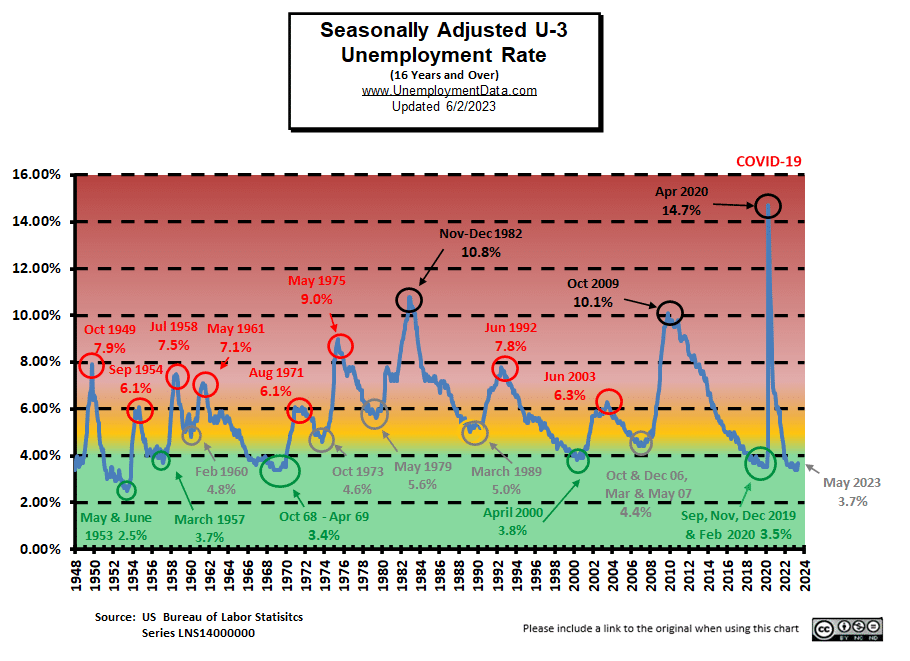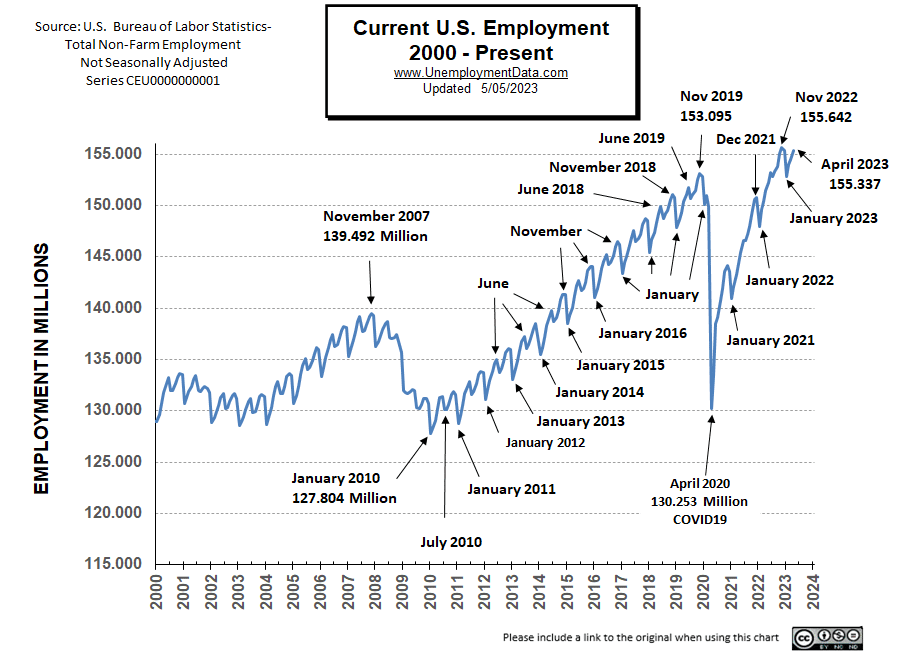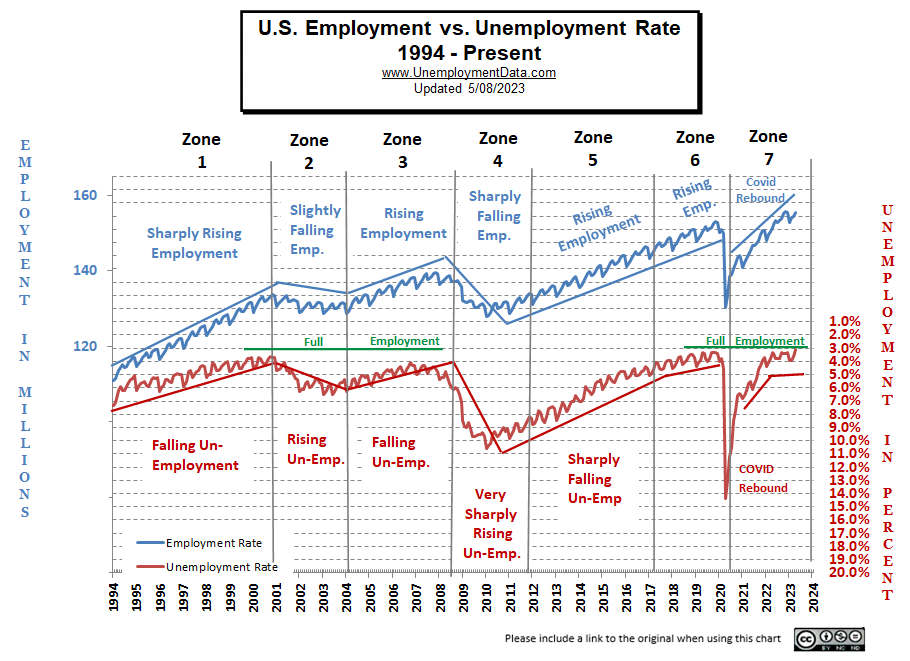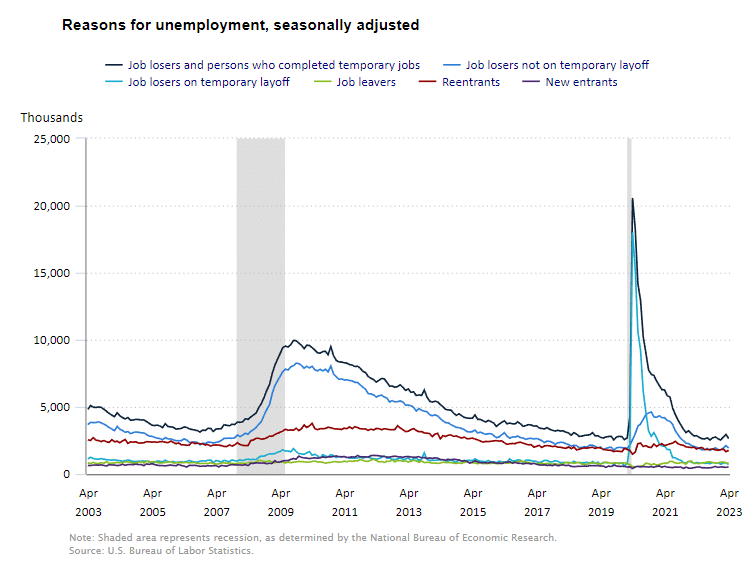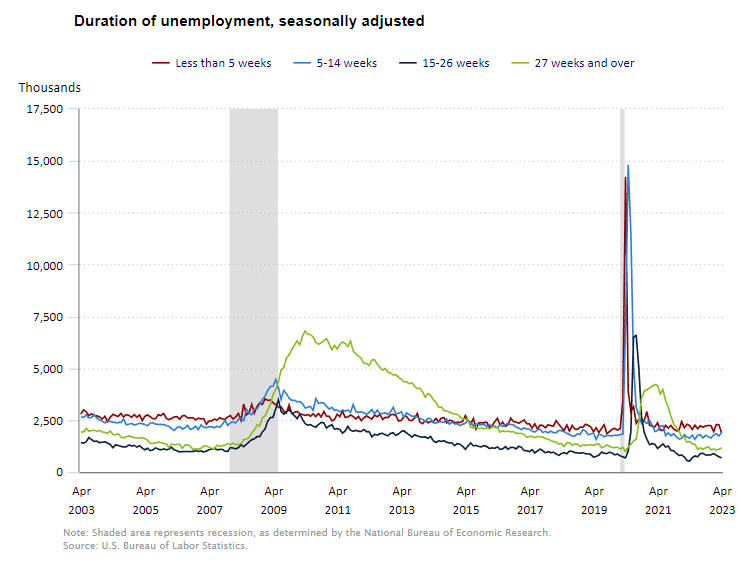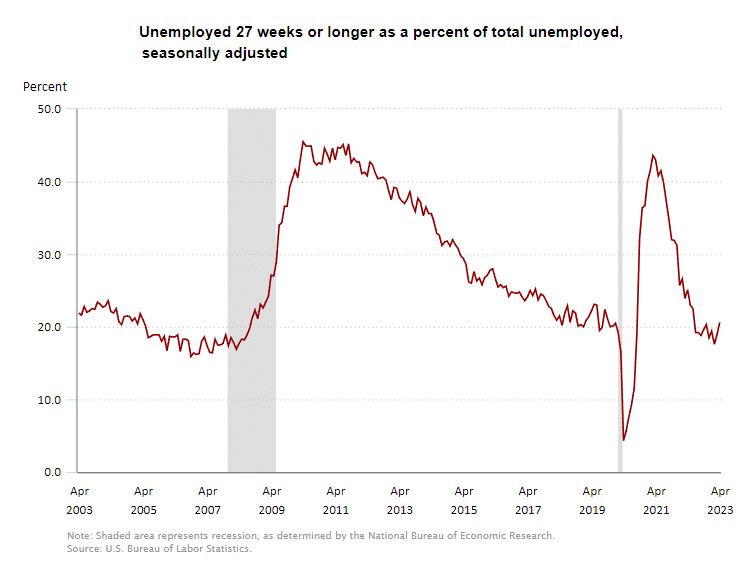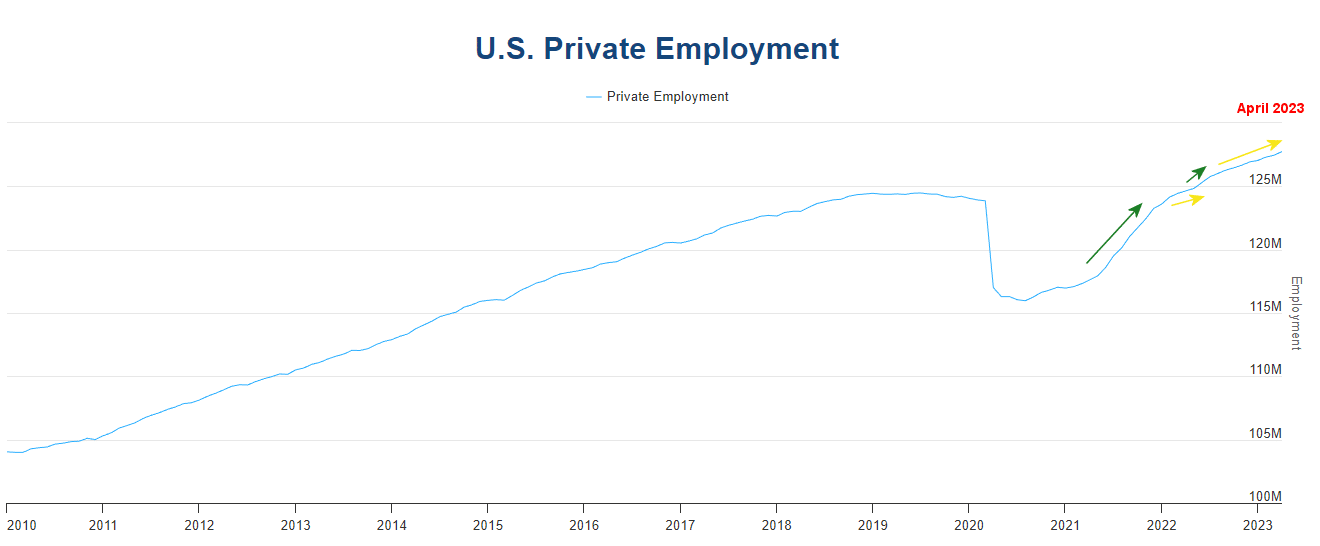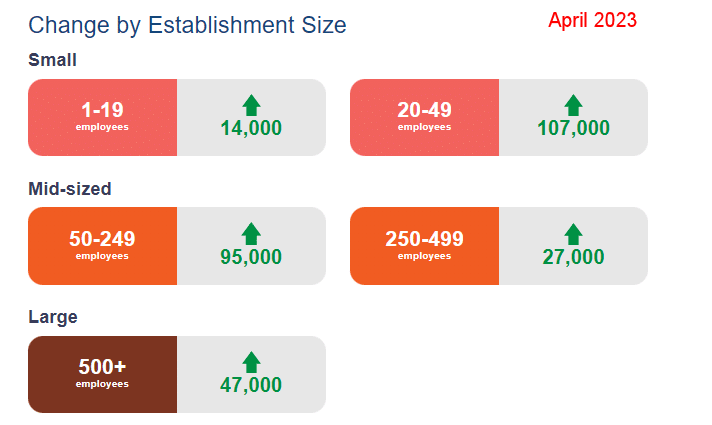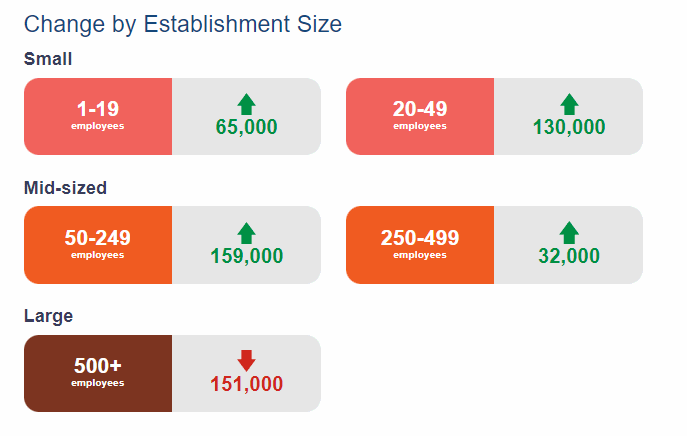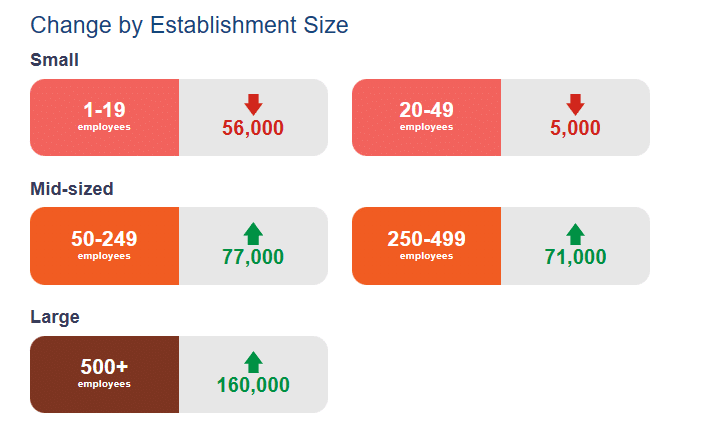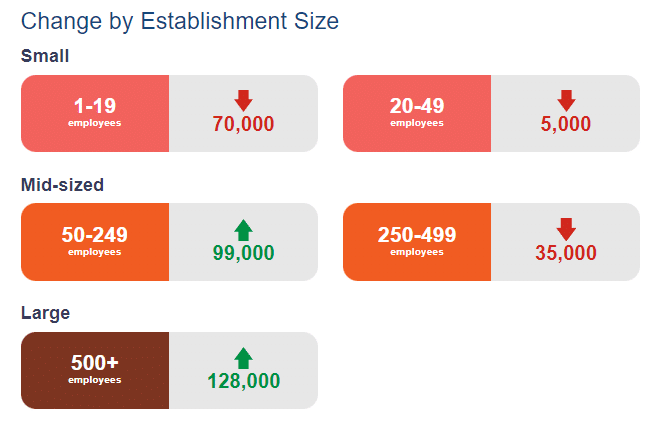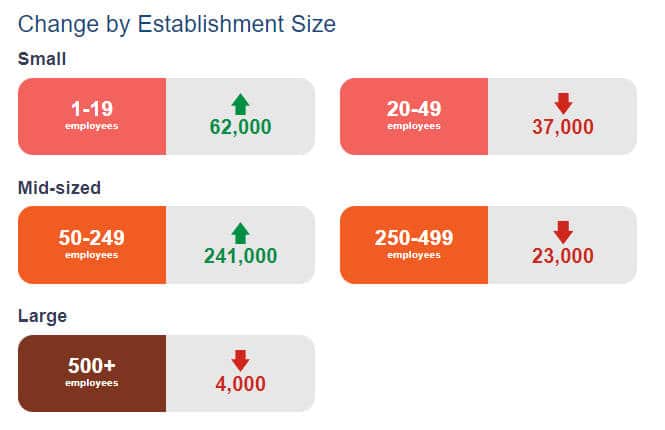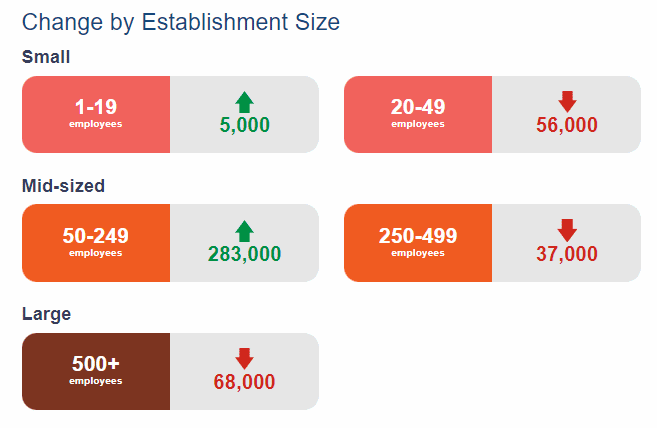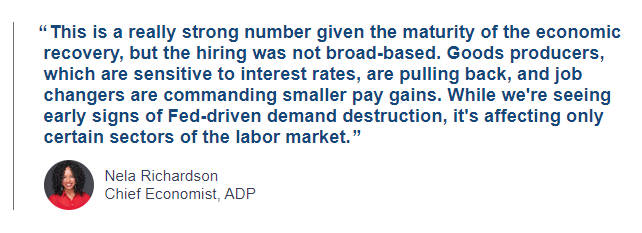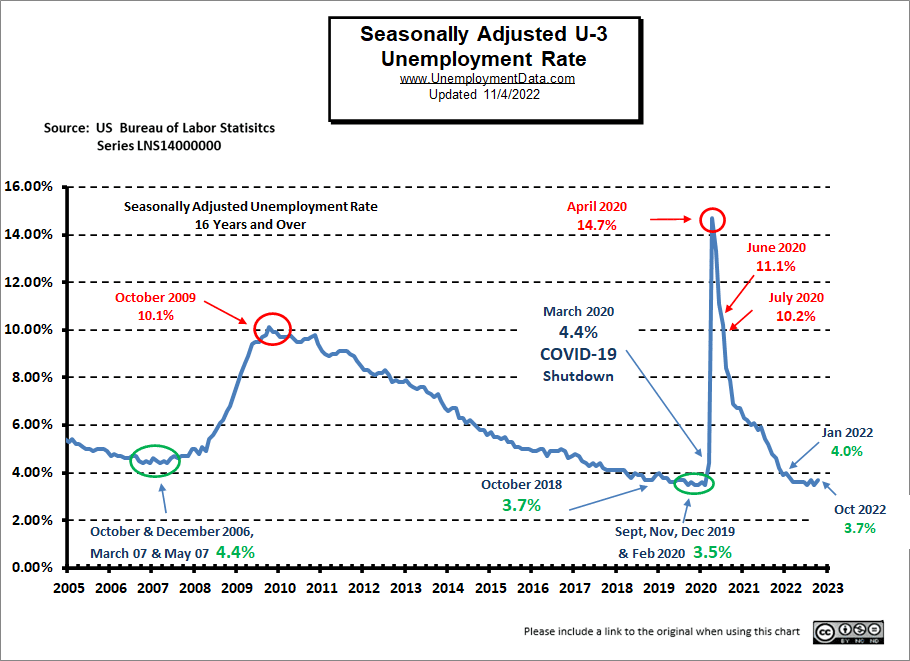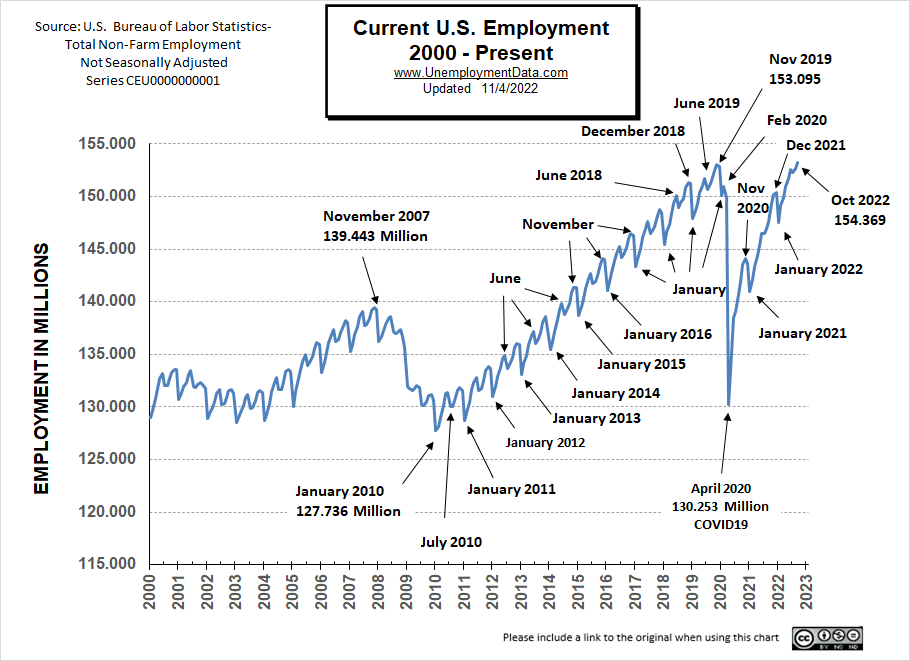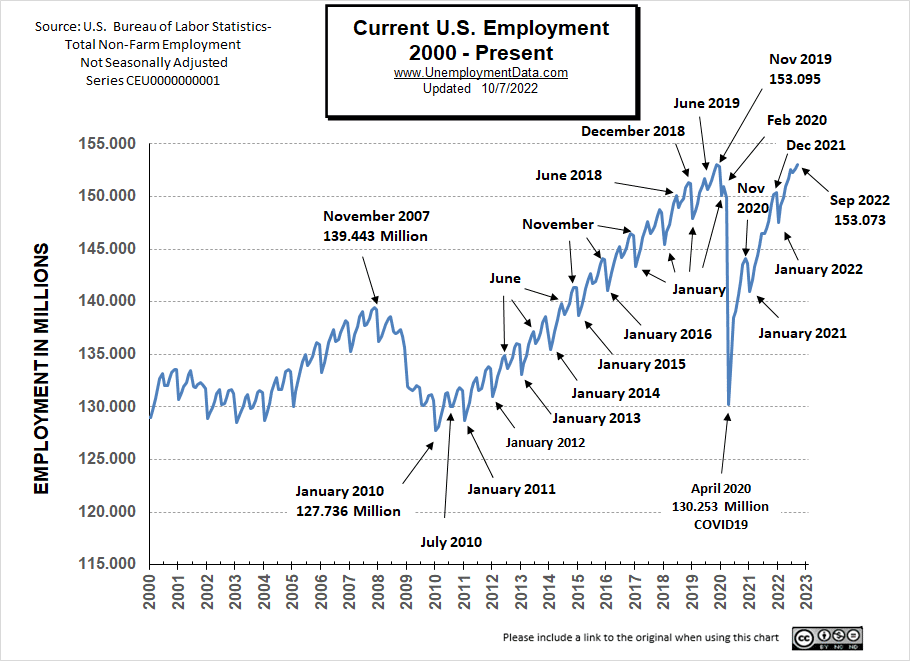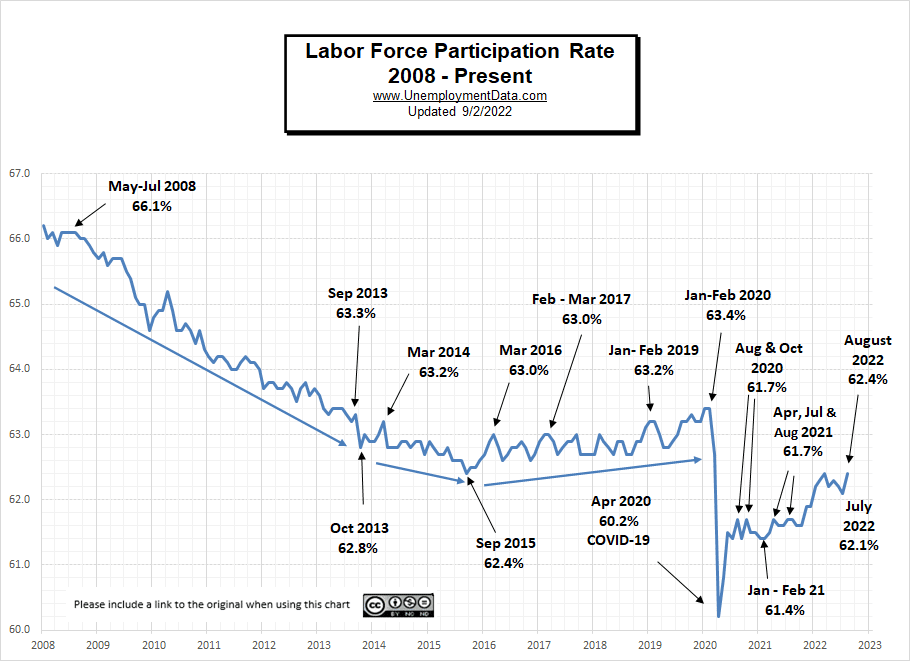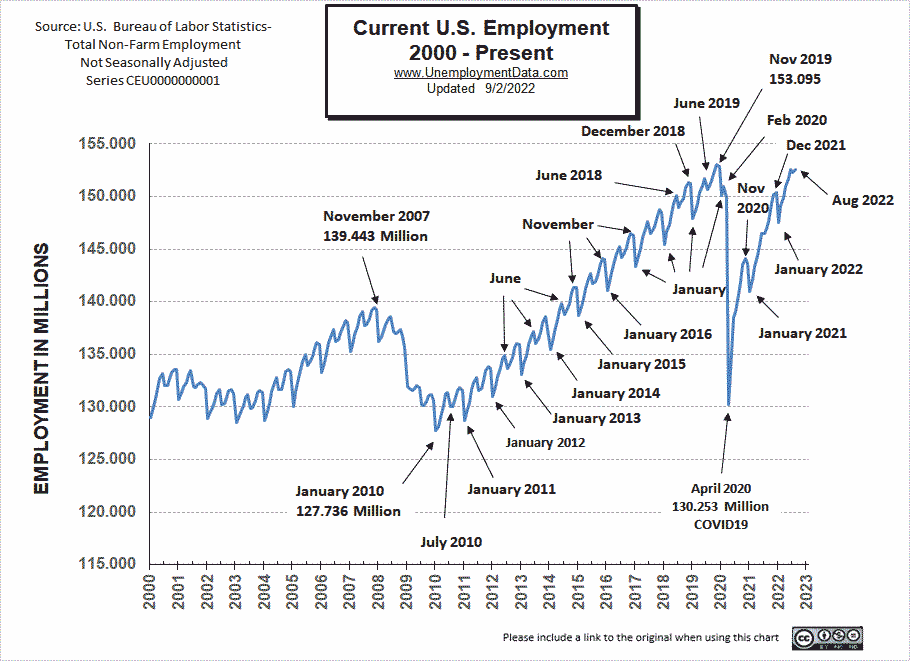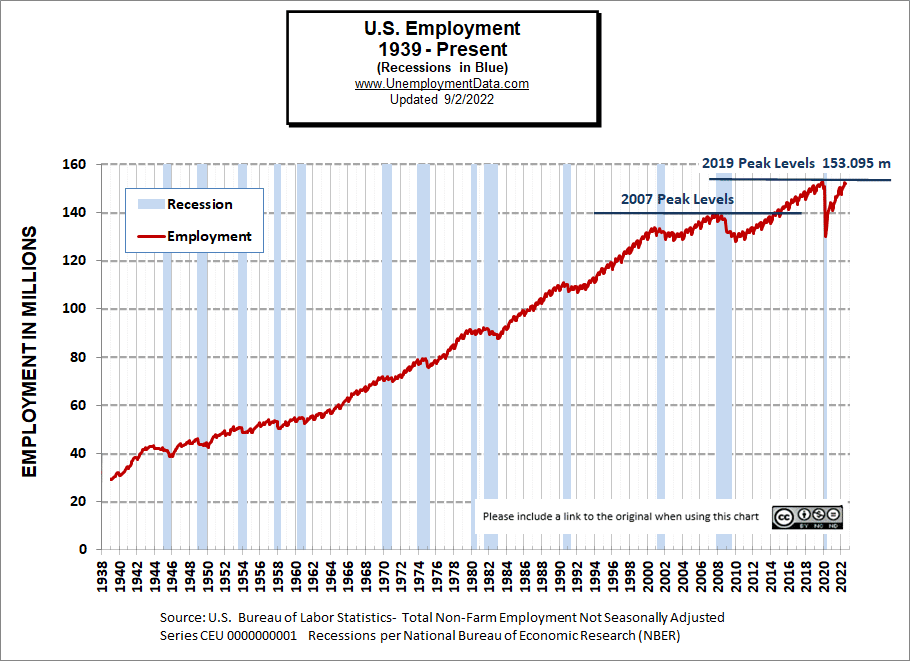The U.S. Bureau of Labor Statistics (BLS) released its employment / unemployment report for July on August 4th 2023.
Adjusted Unemployment down Slightly
![]()
- Adjusted U-3 was 3.5% down from 3.6%
- Unadjusted U-3 was 3.8% unchanged
- Unadjusted U-6 was 7.1% down from 7.2%
- Labor Force Participation unchanged at 62.6%
- Unadjusted Employment fell from 156.945 to 156.126 million
Summary:
Despite the fact that the adjusted U3 unemployment rate was down, and they claim more people were working
there were actually fewer people working in July than in June.
Total Employed went down from 156.945 million in June to only 156.126 million in July.
According to the Commissioner of the U.S. Bureau of Labor Statistics:
“Total nonfarm payroll employment rose by 187,000 in July, and the unemployment rate changed little at 3.5 percent, the U.S. Bureau of Labor Statistics reported today. Job gains occurred in health care, social assistance, financial activities, and wholesale trade.”
You can read the full BLS report here.
As usual, they are talking about “Seasonally Adjusted Jobs”.
Looking at the Unadjusted Employment Statistics Program (Formerly the Establishment Survey report) we see…
Originally the BLS reported employment of 155.963 million for June, which they adjusted to 156.945 million. So they subtracted 18,000 jobs for June. They are reporting 156.126 million jobs for July which is actually a decrease of 837,000 jobs based on their original estimates or a decrease of 819,000 based on their updated numbers.
BLS Source
Current Employment Rate Chart
Adjusted Unemployment is at the pre-COVID 2019 cyclical lows of 3.5%. We’ve been saying that “typically, March or April has one of the lowest unemployment rates for the year, so we could see a slight increase from here without an actual deterioration of the labor market.” And that is what happened before dropping slightly in July. Current levels are still within the “Green Zone”.

